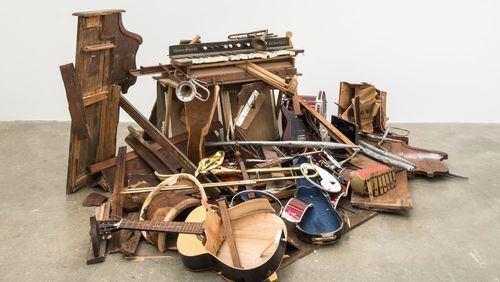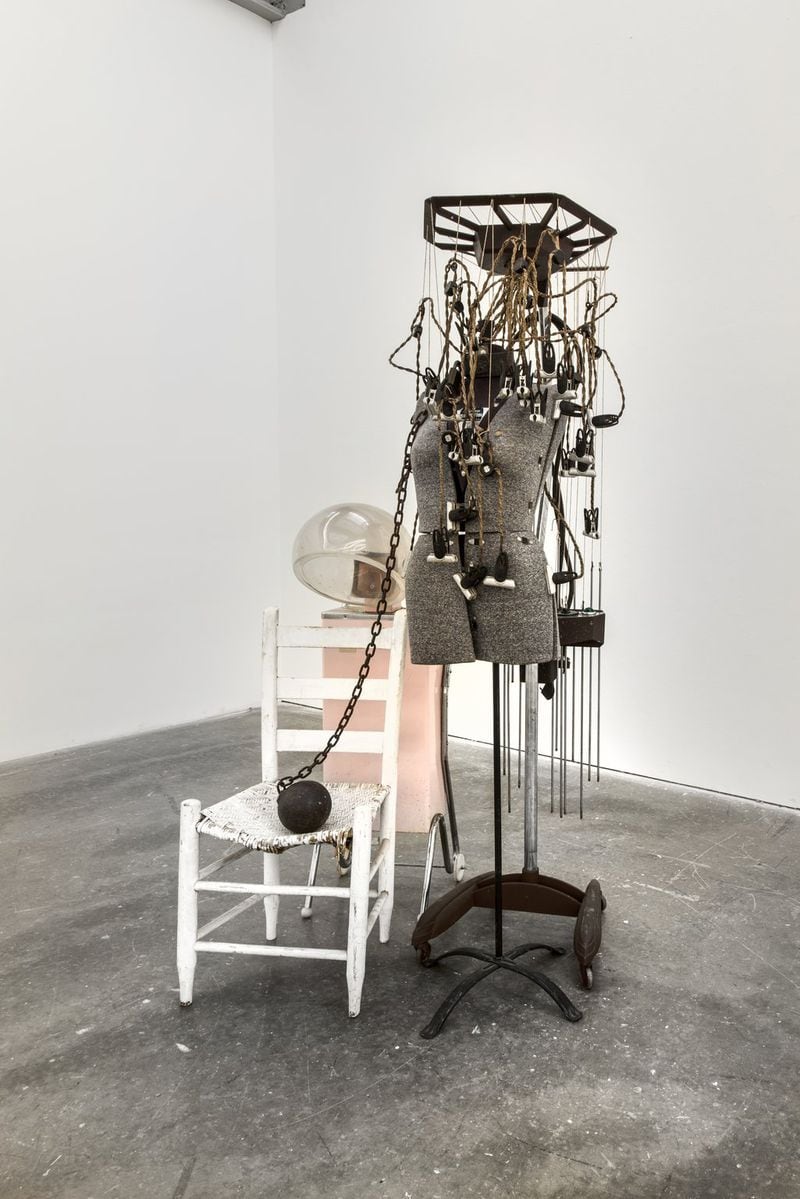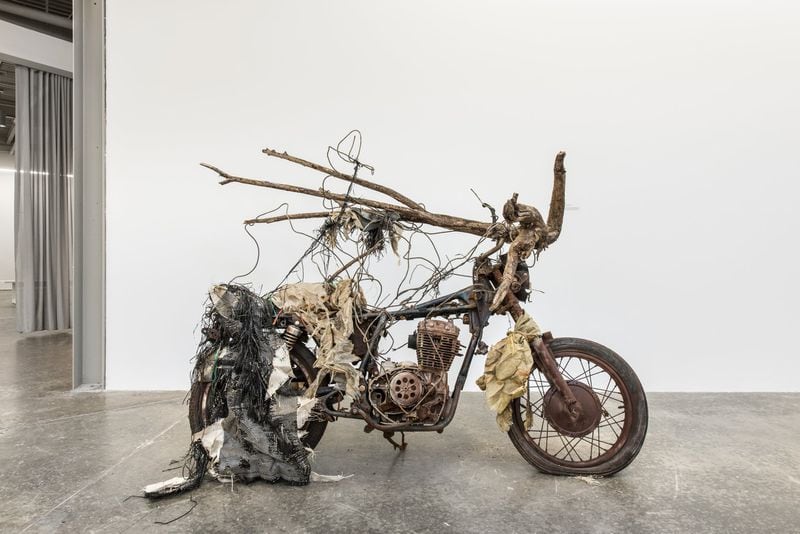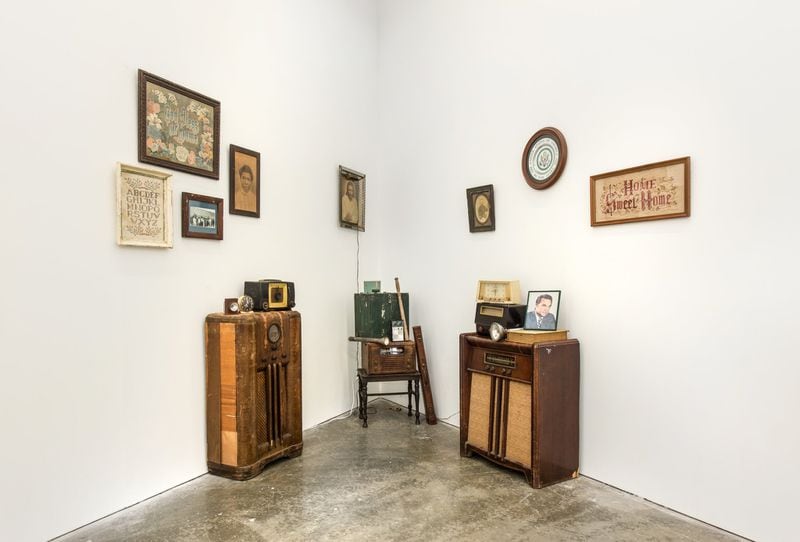The subject of a solo exhibition at the Atlanta Contemporary, "I Snuck Off the Slave Ship," Lonnie Holley is a fascinating artist in his own right. But what his work says about being black in the rural South, and finding beauty where you can is testimony to an entirely different worldview with ramifications beyond the art world.
Born in Birmingham, Ala., Holley has a backstory that plays like a Dickensian tragedy set in rural Alabama. Passed from caretaker to caretaker as a child, Holley served a stint at the notoriously abusive Alabama Industrial School for Negro Children. But through any number of hardships and deprivations, Holley found redemption in creativity. Holley eventually landed in the benevolent arms of his grandmother Momo, who took her grandchild on trips to the “city lot” (aka garbage dump) to salvage usable items.
It was from his grandmother that the self-taught artist found the inspiration for his bricolage art, creating haunting sculptures out of dead technology: boomboxes, rotary dial phones, radios and the mountains of junk that stand in for our cultural propensity to say sayonara to our own past. It’s tempting to see in Holley’s resurrection of these dead things, a reminder that our history is similarly lost to us: that in our urgency to move on, we are a culture of amnesiacs thinking our access to technology, the internet and the latest smartphone grants us knowledge. Holley resurrects the ghosts of those lost things, summoning up the forgotten music of the destroyed musical instruments in artworks like “After the Revival,” a kind of graveyard of creation — drums, organs, guitars — reduced to kindling.
Trash is not just material in Holley’s art, it’s metaphor, for the black experience, for cultural blindness. By reclaiming lost objects, Holley asserts that they have meaning, that he, in fact, has meaning in a culture that has often similarly devalued black lives. His work is a reminder of how intimately black Southerners struggle with history and racism’s legacy while white America is happy to move on and imagine the past is passed.
For this and other reasons, “I Snuck Off the Slave Ship” is a gripping, emotionally resonant solo show of Holley’s various talents, as a visual artist, musician and cultural archivist. His remarkable, alchemic talent for taking found objects and transforming them into commentaries on a variety of subjects can recall ready-mades from Duchamp to Joseph Beuys but with something extra: a sense of recent history steeped in the South’s moldering, rusted-out landscape.
In one of the exhibition’s first assemblages, “Disconnected,” a vintage wooden door is crowned by a portrait of a handsome black man, the portrait’s glass shattered in some cataclysm. The door has been marked with the distinctive “X” of Katrina recovery, a disaster that destroyed so many black homes and lives.
There is a vein of tragedy running through “I Snuck Off the Slave Ship,” in the shrine to Holley’s dead niece and nephew defined by their small shoes and the perennial memorial of a plastic flower in “Too Young for Lost Flowers.”
But the most devastating, meaty work may be an installation wedged into a corner of the gallery, “The First Time We Heard the King,” which makes brilliant use of that claustrophobic architectural detail to tell the story of two Souths existing side by side, both defined by homey details, family time around the radio and Jesus but as alien as distant planets. “We hear how we want to hear,” says Holley of the work whose comforting details are underpinned with violence. A box of matches, a shotgun case and a framed photo of George Wallace make any notions of shared humanity and home crumble. It’s a terrifying, sorrowful, damning work.
ART REVIEW
“Lonnie Holley: I Snuck Off the Slave Ship”
Through April 2. 11 a.m.-5 p.m. Tuesdays and Wednesdays, Fridays and Saturdays; 11 a.m.-8 p.m. Thursdays; noon-4 p.m. Sundays. Atlanta Contemporary, 535 Means St. N.W. 404-688-1970, www.atlantacontemporary.org.
Bottom line: This solo show by a self-taught Alabama artist and musician finds truth in a culture's castoffs.
About the Author









